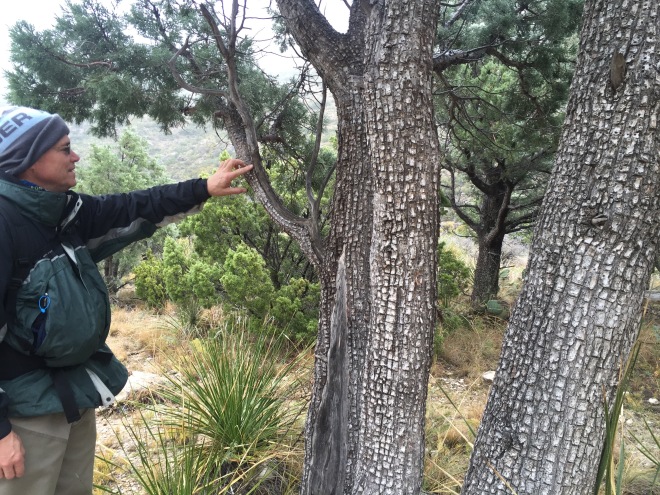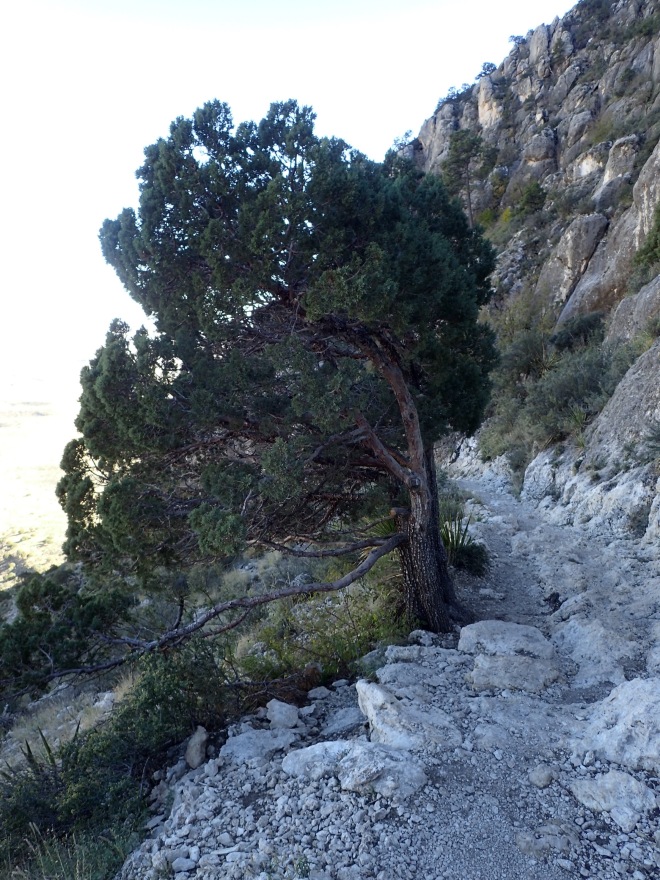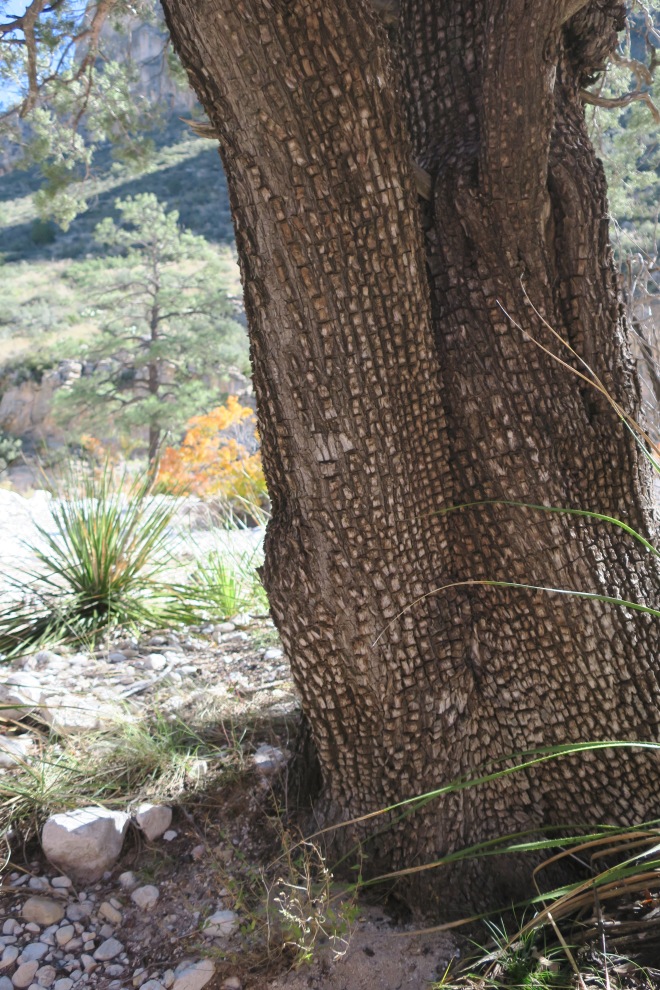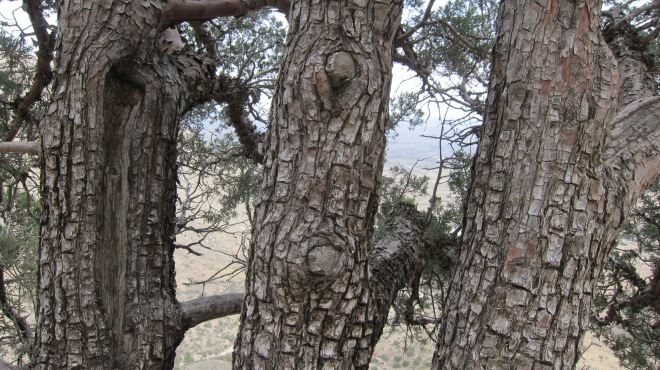The alligator juniper is one of my favorite trees. I first encountered this member of the juniper family while hiking in the Guadalupe Mountains. It’s one of those trees that is hard to miss once you identify and get to know its distinctive characteristics. Here are five facts about the alligator juniper tree.
 1. The alligator juniper is named for its most distinctive characteristic — its bark.
1. The alligator juniper is named for its most distinctive characteristic — its bark.
The easiest way to identify the alligator juniper is by its distinctive bark. Look for rough square-plated bark that resembles the skin of an alligator. The thick bark grows in a cracked or checkered and furrowed pattern that sets it apart from other trees. The leaves of the alligator juniper are a deep green to blue-green in appearance.
 2. The alligator juniper is a tree as tough as its name.
2. The alligator juniper is a tree as tough as its name.
The Guadalupe Mountains is a perfect place for alligator juniper. The tree prefers dry hillsides at moderate elevations like those found in the Trans-Pecos region of the state. The tree grows in the company of piñons, ponderosas, oaks, and other junipers. Alligator juniper has a high tolerance for heat and a low requirement for water. This evergreen tree thrives in either alkaline limestone or slightly acidic igneous soil.
 3. The alligator juniper is in no hurry.
3. The alligator juniper is in no hurry.
According to the science of dendrochronology or the study of growth rings in trees, alligator juniper trees grow at a slow rate. Research has shown that young trees grow in diameter at a rate of 0.6 inches per decade — that’s pretty slow! The growth rate slows to 0.4 inches after the tree reaches 170 years of age. Alligator juniper trees have been known to live as long as 500 years. That’s pretty amazing!
 4. The alligator juniper is a berry producer.
4. The alligator juniper is a berry producer.
The female tree produces edible berries that can be consumed raw or steamed. Native Americans used the strongly scented berries to flavor teas and incense and even added the berries to cornbread and sausages. Some Indians dried the berries for winter use or ground them into a mush and then formed them into cakes. In addition, they used the resin of the tree as chewing gum.
 5. The alligator juniper is a favorite of wildlife.
5. The alligator juniper is a favorite of wildlife.
The alligator juniper attracts a variety of wildlife. Wild turkeys and deer especially enjoy juniper berries. Various bird species such as sparrows, Mexican jays, flycatchers, woodpeckers, and hummingbirds breed among junipers. So, keep your eyes peeled for wildlife when you are out hiking among alligator juniper.

A favorite tree of mine, and they grow faster in a garden…and look quite stunning.
LikeLike
Thanks for the good word. This is indeed a stunning tree that has become a personal favorite. Would love to have one in my yard.
LikeLike
Pingback: Alpine, AZ – Streamin' in Shiny
While exploring the Cibola National Forest near Albuquerque N.M I noticed many dying Alligator Junipers, young and old. Does any one know why?
LikeLike